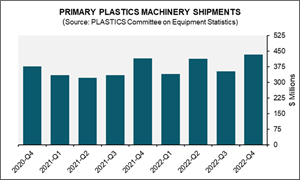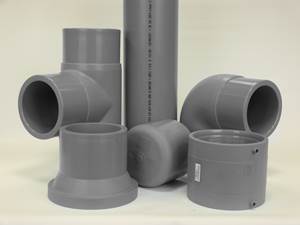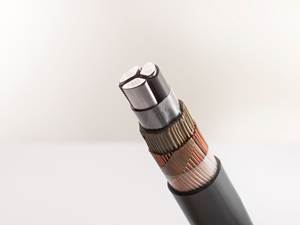Prices of Polyolefins, PET Softer; PS, PVC Up for Short Term
Overall, supply outstripping demand likely to keep price trajectory flat-to-down.
Third quarter for the top five commodity thermoplastics has the potential to be characterized by softer prices all around barring any major production disruptions or a spike up in crude oil prices. Among the major drivers, depending on the resin, are supplies that outstrip demand, lower feedstock costs, and lower global resin prices. Even in the case of PS and PVC, where prices appear be moving up in the short term, the trajectory is definitely more on the downslide.
Here’s a look at how some of our industry resin pricing experts view things for each of these volume resins including, purchasing consultants from Resin Technology, Inc. (RTi), Fort Worth, Texas; senior editors from Houston-based PetroChemWire (PCW); and CEO Michael Greenberg of the Plastics Exchange in Chicago.
▪ PE: Prices by end of July were being reported flat-to-down, while suppliers are still out with their 3¢/lb price increase. Mike Burns, RTi’s v.p. of PE markets, notes that PE suppliers rebuff that there were contract prime price decreases in June, as had been projected by industry analysts. This despite record PE inventories. And, The Plastic Exchange’s Greenberg puts it this way, “Although a 3¢/lb contract price increase is on the table for July, an official decrease is seeming more likely for those that did not already receive relief in June. Spot prices are just too weak and discounts are too large to justify an increase at this time and a $.03/lb decrease would just wipe away the surprise increase that took hold in April.”
PCW senior editor David Barry characterized PE spot prices as flat to lower as supply continues to outstrip demand. “With earnings season in full swing, suppliers were touting strong PE export growth, especially to Asia, and expectations of continued low, stable feedstock costs in North America. The domestic market was sluggish, although it was unclear how much was due to the usual seasonal trend and how much was due to slower economic growth. The export channels continued to see abundant offers but tepid international demand, with some export buyers calling for lower prices in August.”
These three sources generally concede that prices in the August-September time frame are unlikely to change from a flat-to-lower trajectory. Burns notes that processors are starting to build their inventories heading into the fall season. Off-grade resin prices were at near a 10-year low, with HDPE and LLDPE prices below 40¢/lb. Similarly, export prices for August were 1¢/lb lower than July. Still, he notes that there are several factors that may keep PE prices flat into the late fall, including demand for exports from Southeast Asia for their agricultural season, domestic demand for packaging for the upcoming holiday season, weather, oil price increases, and “supplier determination to maintain margins.”
▪ PP: Prices in July increased by .5¢/lb, decoupling for the first time in a couple of years from propylene monomer contracts which settled up 1.5¢/lb, according to Scott Newell, RTi’s v.p. of PP markets, PCW’s David Barry and The Plastic Exchange’s Greenberg.
Noting that the major industry indices showed a 1¢/lb erosion of PP prices in July, Newell notes that the industry had not seen any decrease in suppliers’ margins since 2015. Generally, these sources expect PP prices to hover between 1-2¢/lb up or down, with the potential of more supplier margin erosion before year’s end.
Both Barry and Greenberg reported on a very active spot PP market with supply characterized as abundant, especially for PP homopolymer. “We are seeing some great deals out there and buyers clearly agree, as a sustained flurry of railcars and truckloads have been changing hands through our marketplace,” wrote Greenberg.
Barry notes that spot prices PP homopolymer were lower by 4-7¢/lb than prime PP prices, while Newell reports on a difference of as much as 5-10¢/lb in some cases. Says Newell, “Demand for PP continues to disappoint…June demand was off quite a bit, with a 66 million/lb supplier inventory buildup and a comfortable 36.7 days of inventory, and industry sentiment for July was that demand had not shown much life. We’re back to a well-supplied market.” Newell notes that because of the lackluster demand and the anticipated capacity increases next year, some suppliers are going after market share with competitive pricing while others are trying to maintain market share by reducing operating rates to below 90%.
▪ PS: Prices appeared to be moving up 2¢/lb as July came to an end and suppliers pushed hard to implement a 3¢/lb increase, according to both PCW’s Barry and Robin Chesshier, RTi’s v.p. of PE, PS and nylon 6 markets. They note that the move was in step with July benzene contract settling up by 33 cents/gal to $2.67/gal. Every 10¢/gal move in benzene equates to 1¢/lb in the production of PS, noted Barry, who also characterized demand as abundant, with demand really off as more and more companies look to shift to alternative resins, particularly in packaging.
Adds Chesshier, “While suppliers have some legitimacy with this increase, buyers are also pushing back hard because they feel they ought to have gotten back 2¢ out of the 4¢/lb April increase which suppliers attributed half to benzene increases and half to flooding.” Moreover, she adds that all industry indices show production down and demand down, and adds that ethylene prices are at record lows and butadiene prices, affecting HIPS grades, have also dropped. Both sources venture PS prices in August and September, barring any major disruptions, to be flat-to-down.
▪ PVC: Prices for June were still somewhat unresolved as we neared the end of July, although PCW senior editor Donna Todd reported that June contract resin prices appeared to be settling up 2¢/lb, as suppliers pushed to implement their June increase. “The rationale behind the price bump was that planned and unplanned downtime this year had caused a significant drawdown of producer inventories, meaning supply has not kept up with demand. However, converters said they were not seeing a big increase in demand this year on the domestic side of the market.”
Mark Kallman, RTi’s v.p. of PVC and engineering resins, ventured that July prices were likely to be shown as flat and August was likely to see at least 1¢/lb come off from the implemented price hike. “By July, production issues had been resolved and output was up while demand fell.” He notes that the construction market has not been as strong as had been expected and export prices have also dropped. Ethylene dropped a bit more in June and was expected to be flat. “Suppliers had a good first half of the years with record low ethylene prices that increased their margins.” He ventures that September PVC prices could be flat-to-down if the global market softens further.
▪ PET: Prices—both domestic and imports--hovered in the low-to-mid 50s, driven by a global glut of PET resin, according to PCW senior editor Xavier Cronin. He notes that July was ending with PET prices at 52-55¢/lb delivered locations east of the Rockies and port locations in Northern California and Southern California. Cronin ventures that PET prices in August would stagnate at these levels.
Typically, PET prices rise in summer months due to robust consumption tied to high volumes of single-use PET bottles and containers used for carbonated beverages, other drinks and bottled water. Cronin reports that PET resin imports in the first five months of 2019 were actually down 10.6% from Jan-May 2018 (mainly due to a plunge in imports from the top source, Mexico), but U.S. supply is still robust due to domestic production and imported resin produced throughout the world—including Egypt, S. Korea, Vietnam and Malaysia, priced competitively for domestic buyers.
Related Content
Plastics Machinery Shipments Rose in 2022’s Final Quarter
The Plastics Industry Association’s (PLASTICS) Committee on Equipment Statistics (CES) reported that injection molding and extrusion machinery shipments totaled $432.7 million in Q4.
Read MoreAdvanced Drainage Systems to Build New Florida Manufacturing Facility
New manufacturing facility will complement other ADS facilities in the southeast region.
Read MoreBorealis and Partners Move Forward with Crosslinked PE and PP Pipes Based on Renewable Feedstock
The company’s partnerships in these new drop-in solutions significantly advances carbon footprint reduction.
Read MoreChemical Recycling Process for Crosslinked PE
Borealis announces capability to produce recycled PE for use in wire & cable, infrastructure industries.
Read MoreRead Next
Understanding Melting in Single-Screw Extruders
You can better visualize the melting process by “flipping” the observation point so that the barrel appears to be turning clockwise around a stationary screw.
Read MoreHow Polymer Melts in Single-Screw Extruders
Understanding how polymer melts in a single-screw extruder could help you optimize your screw design to eliminate defect-causing solid polymer fragments.
Read MoreLead the Conversation, Change the Conversation
Coverage of single-use plastics can be both misleading and demoralizing. Here are 10 tips for changing the perception of the plastics industry at your company and in your community.
Read More

















.png;maxWidth=300;quality=90)












